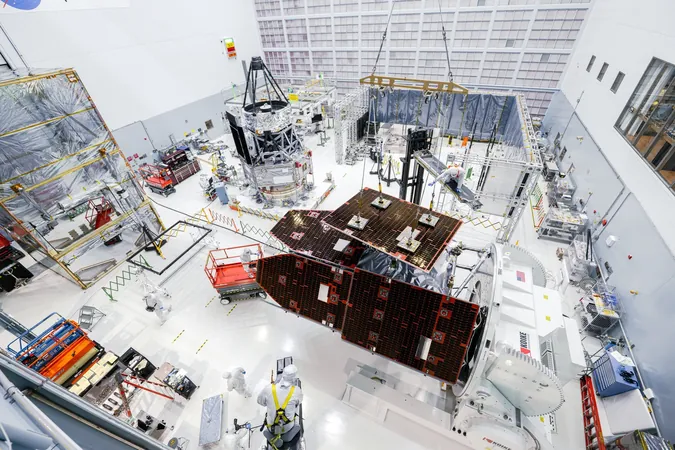
The Mysterious Absence of Planets Around Vega: What Are Astronomers Discovering?
2024-11-09
Author: Sarah
Introduction
In an astonishing revelation, astronomers have delved into the intriguing cosmic mystery surrounding the iconic star Vega, known for its striking glow and proximity to Earth, located just 25 light years away in the constellation Lyra. Initially discovered in 1984, Vega presented scientists with a rotating disk of gas and dust—the very elements required for planet formation. Yet, recent investigations using advanced instruments from NASA's Hubble and Webb space telescopes have unveiled a startling fact: there are no planets present in this legendary disk.
The Smoothness of Vega's Disk
A team of astronomers from the University of Arizona conducted a comprehensive examination of the nearly 100 billion-mile-wide debris disk encircling Vega. To their astonishment, they reported, “The Vega disk is smooth, ridiculously smooth,” according to Andras Gáspár, a key researcher involved in the study. This unexpected finding raises questions about the nature of circumstellar disks and how they can differ dramatically from those where planets have been formed.
Cultural Significance of Vega
The intrigue around Vega deepens with its cultural significance. The star was not only pivotal in the study of exoplanetary systems; it also played a central role in popular culture, particularly in the 1997 film "Contact," based on Carl Sagan's novel. The film depicts a scientist—Ellie Arroway, played by Jodi Foster—journeying to Vega in search of extraterrestrial life, only to discover the stark absence of planets. It seems art imitated life, as real-world findings echo the film's narrative.
Reevaluating Exoplanet Systems
“Vega's case is forcing us to reevaluate what we know about the diversity of exoplanet systems,” remarked Kate Su, another researcher from the University of Arizona and the lead author of the paper detailing the Webb findings. This situation not only stimulates intrigue but also challenges scientists to reconsider the criteria for planet formation across various star systems.
New Observations and Findings
Significantly, earlier observations by NASA’s Spitzer Space Telescope in 2005 had already indicated that the surrounding dust was more extensive than initially thought. Now, nearly 20 years later, Hubble and Webb have collaborated to capture unprecedented details of Vega’s disk. The Webb telescope identified a warm glow from sand-sized particles enveloping the star—40 times brighter than our Sun—while Hubble focused on reflected light from this dust, revealing a finer outer halo of particles smaller than smoke grains.
Dynamics of Dust Particles
Researchers are particularly fascinated by the varying sizes of the dust particles, which can provide insights into the complex dynamics at play in circumstellar disks. “Different types of physics will locate different-sized particles at different locations,” noted Schuyler Wolff from the University of Arizona's Steward Observatory. Understanding these mechanics may ultimately illuminate how certain stars, like Vega, manage to exist without the planets one would typically expect.
Conclusion
As scientists unravel this cosmic conundrum, the absence of planets in Vega’s disk continues to pose stimulating questions. Could this star reveal truths about the evolutionary processes of planets in our universe? The saga of Vega is far from over, and the mysteries of the cosmos beckon for more exploration. Stay tuned as astronomers navigate these celestial puzzles that might redefine our understanding of planetary formation!



 Brasil (PT)
Brasil (PT)
 Canada (EN)
Canada (EN)
 Chile (ES)
Chile (ES)
 Česko (CS)
Česko (CS)
 대한민국 (KO)
대한민국 (KO)
 España (ES)
España (ES)
 France (FR)
France (FR)
 Hong Kong (EN)
Hong Kong (EN)
 Italia (IT)
Italia (IT)
 日本 (JA)
日本 (JA)
 Magyarország (HU)
Magyarország (HU)
 Norge (NO)
Norge (NO)
 Polska (PL)
Polska (PL)
 Schweiz (DE)
Schweiz (DE)
 Singapore (EN)
Singapore (EN)
 Sverige (SV)
Sverige (SV)
 Suomi (FI)
Suomi (FI)
 Türkiye (TR)
Türkiye (TR)
 الإمارات العربية المتحدة (AR)
الإمارات العربية المتحدة (AR)